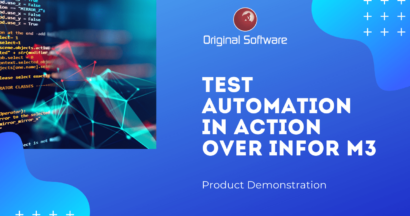Table of contents
Who doesn’t love free stuff? Getting something for free is a guaranteed mood booster; if you’re getting something free for your business, even better. In the world of software testing, there are plenty of free tools out there – especially when it comes to test automation. And all you have to do is learn a little bit of code!
Right?
In this blog, we’re going to play devil’s advocate and compare coded and code-free testing tools. Because those free tools might not actually be as good value as they seem. In fact, they could end up costing your organization more.

Hidden cost #1: the skills required
Free tools such as Selenium require you to be able to code. So, if you can’t code, you’ll either have to bring in someone who can (which could cost around $100,000 per year for a skilled developer, plus the costs of inducting and training them up), or teach yourself. Not a problem if you’ve always wanted to learn Python, C++, or Java, but not ideal if you just want to get on with software testing.
Compare that with code-free testing tools, which are designed specifically to be used by people without coding skills (though that doesn’t always quite hold true, as we’ll see in hidden cost #3). How much would you pay to not have to learn to code?
Hidden cost #2: the time required
Unless you’re a lightning-fast typist with a perfect memory of your entire coding language, using code to create automated tests takes longer than code-free testing tools do. Not to mention that you’ll need to build your test script library from the ground up at first – which is a LOT of coding.
Code-free tools, generally speaking, make it far quicker to build test cases – time that could be spent on other responsibilities, or even used to finish work on time. How much is that worth to you?
Hidden cost #3: the maintenance
One of the great paradoxes of test automation is that you design a test script based on a version of software – but then you use it to test a new version of that software, which could be significantly different to the version you built the test script on.
Most code-based test automation tools are logic-based, and if the software changes too much, the test breaks. If that happens, guess who has to open up their code editor and fix it manually? That’s right, it’s you!
Even some code-free tools suffer from this problem, depending on how they work. Other tools, like ours, use AI-powered object recognition to intelligently identify key elements of an application – even if they change.
Hidden cost #4: the quality
If you choose to bake your own birthday cake instead of buying one from the shop, you’ll undoubtedly save money – but will you have a tasty cake to eat at the end? That’s all down to you (or hopefully one of your friends or family; making your own birthday cake sounds quite sad).
The same principle applies to your test automation. If you’re building your own tests using something like Selenium, the quality of them is ultimately down to your skills as a coder and your creativity as a test manager. Have you remembered all the test cases you need to run? Have you coded everything correctly? Or efficiently?
Comparing Selenium to code-free testing, the quality of the test is now down to the software you own. And depending on how end-to-end your testing solution is, you might find that you get tools to help you capture all the test cases you need to as well.

Code-free vs coded testing tools: the final verdict
It is perfectly possible to do great automated testing using free test automation tools that rely on code. All you need is:
- The coding knowledge to drive the solution.
- The time to make it work (and keep it working if it breaks).
- The experience to do it well.
If you’re missing any of those three things, then code-free testing tools represent a way to protect the quality of your software testing, and therefore your software. With Crowdstrike’s $25bn loss of market value (and impending lawsuits) fresh in everyone’s mind, the investment required to ensure you’re doing everything you can to deliver bug-free software to employees and customers doesn’t seem that much after all. Many code-free, paid-for tools are even cheaper than hiring in a coder to run your free tool, as well as offering a quicker time-to-value.
This is especially true when you consider that the right tools can pay for themselves just by delivering process improvements. The Original Software Platform, for instance, can reduce the effort of user acceptance testing by as much as 60% – representing a significant saving of man-hours. With tools to help document every business process that needs testing, the AI-powered object recognition in our test automation that we mentioned earlier, and a built-for purpose test management facility, Original Software might not be a free tool – but we’d be prepared to wager that it saves you money in the long run.
If you’d like to learn more about our platform and discuss your current testing needs, click below to get in touch.











